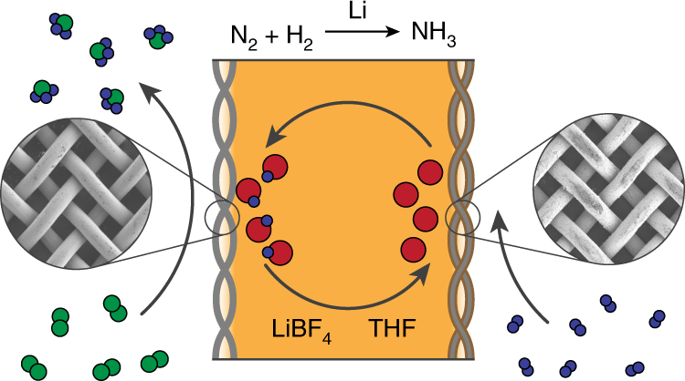2020/5/13 カーネギーメロン大学

・ カーネギーメロン大学とトロント大学の研究チームが、CO2 をエチレンに転換する新しい触媒の鍵となる材料開発の能率の向上を目指し、人工知能(AI)を活用。
・ その結果得られた電解触媒は、同様な機能の触媒の中で最も効率性が高く、風力や太陽光発電の電力を使用すれば、これらの再生可能エネルギー源からの電力を効率的に貯蔵する手段を提供する。
・ クリーンな電力で CO2 をエチレンに転換することで、炭素捕獲とクリーンエネルギー貯蔵の双方の経済性の向上が見込めると考える。プラスチックから台所用洗剤まで、多様な製品を作る前駆体のエチレンの世界市場は 600 億ドル。
・ 同研究チームでは、CO2 をエチレンや他のカーボンベース分子に転換する反応のエネルギーコストの低減を目指した世界トップレベルの触媒を数多く開発。優れた触媒は既に実用化されているものの、材料の選択肢は無数にあり、それらを全て試験するには時間がかかるため、AI の機械学習を利用して触媒の研究開発を加速。アルゴリズムがコンピュータ・モデルと理論データを用いて不適当な選択肢を排除し、有望な候補を特定する。
・ AI を利用したクリーンエネルギー材料の研究は、カーネギーメロン大学とカナダ先端研究機構(CIFAR)との協力による 2017 年のワークショップで推進されたもの。同年 12 月発行の Nature commentary article にて詳細を説明している。
・ CO2-エチレン転換では、有望な触媒材料とそれらの特性を纏めた大規模なデータセットが存在しないため、最も見込みのある材料を発見するクリエイティブな方法を時間をかけて探った。
・ 同研究チームが開発したアルゴリズムでは、機械学習モデルとアクティブラーニングを組合せ、材料自体の詳細なモデル無しで、ある触媒が生成しそうな物質を大まかに予測する。
・ これらのアルゴリズムを CO2 削減に適用し、240 種類を超える材料を調査したところ、極めて多様な組成や表面構造から有望な特性が予測された 4 種類の材料を発見。最高の性能を提供する触媒材料として、銅とアルミニウムの合金を特定した。
・ 高温度で両金属を融合後、アルミニウムをいくらか取り除くとナノスケールの多孔質構造ができる。同新触媒を電解槽で試験した結果、ファラデー効率(生成物に寄与した電流の割合)で 80%を測定。この反応では最高記録となる。同新触媒は、AI の一部利用により開発された、CO2 をエチレンに転換する最初のものとなる。また、同研究チームが開発するアクティブラーニングによる手法の初の実証でもある。
・ 化石燃料由来のエチレンのコストに競合するには、同システムのエネルギーコストをさらに低減する必要がある。今後の研究では、反応に要する全電圧と、分離にコストがかかる副生物生成の割合のさらなる低減を目指す。
URL: https://www.cheme.engineering.cmu.edu/news/2020/05/ulissi-toronto.html
<NEDO海外技術情報より>
(関連情報)
Nature 掲載論文(アブストラクトのみ:全文は有料)
Accelerated discovery of CO2 electrocatalysts using active machine learning
URL: https://www.nature.com/articles/s41586-020-2242-8
Abstract
The rapid increase in global energy demand and the need to replace carbon dioxide (CO2)-emitting fossil fuels with renewable sources have driven interest in chemical storage of intermittent solar and wind energy1,2. Particularly attractive is the electrochemical reduction of CO2 to chemical feedstocks, which uses both CO2 and renewable energy3,4,5,6,7,8. Copper has been the predominant electrocatalyst for this reaction when aiming for more valuable multi-carbon products9,10,11,12,13,14,15,16, and process improvements have been particularly notable when targeting ethylene. However, the energy efficiency and productivity (current density) achieved so far still fall below the values required to produce ethylene at cost-competitive prices. Here we describe Cu-Al electrocatalysts, identified using density functional theory calculations in combination with active machine learning, that efficiently reduce CO2 to ethylene with the highest Faradaic efficiency reported so far. This Faradaic efficiency of over 80 per cent (compared to about 66 per cent for pure Cu) is achieved at a current density of 400 milliamperes per square centimetre (at 1.5 volts versus a reversible hydrogen electrode) and a cathodic-side (half-cell) ethylene power conversion efficiency of 55 ± 2 per cent at 150 milliamperes per square centimetre. We perform computational studies that suggest that the Cu-Al alloys provide multiple sites and surface orientations with near-optimal CO binding for both efficient and selective CO2 reduction17. Furthermore, in situ X-ray absorption measurements reveal that Cu and Al enable a favourable Cu coordination environment that enhances C–C dimerization. These findings illustrate the value of computation and machine learning in guiding the experimental exploration of multi-metallic systems that go beyond the limitations of conventional single-metal electrocatalysts.




